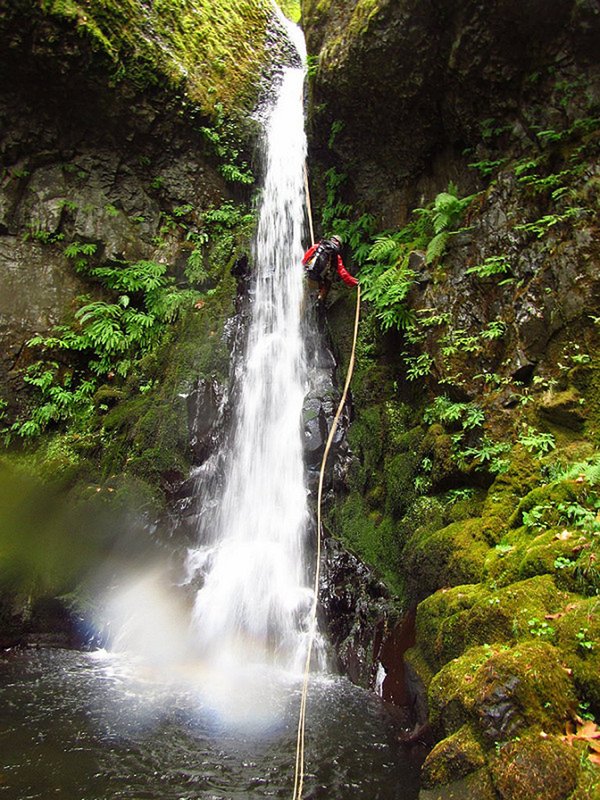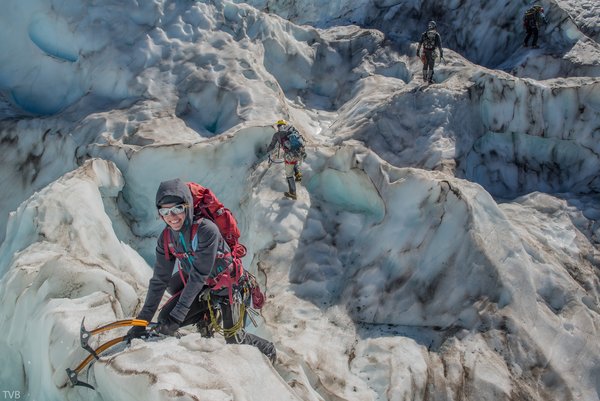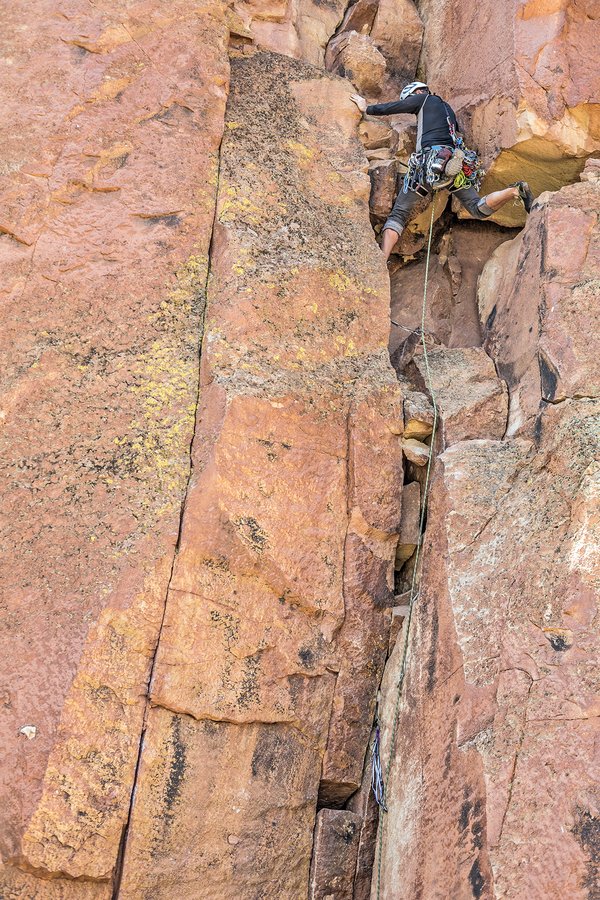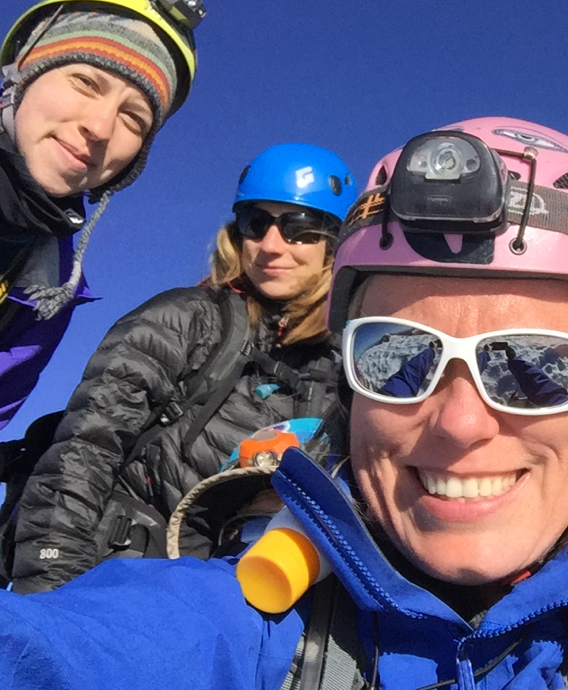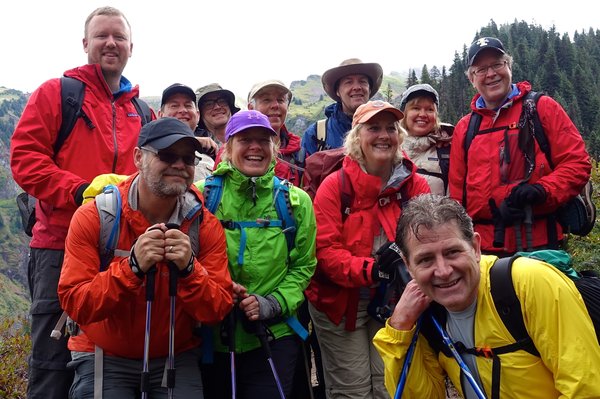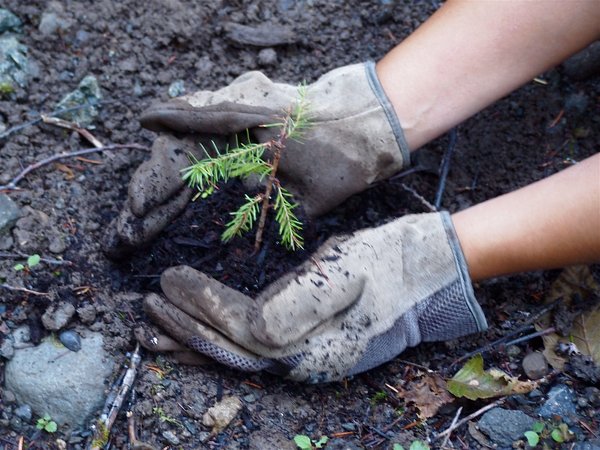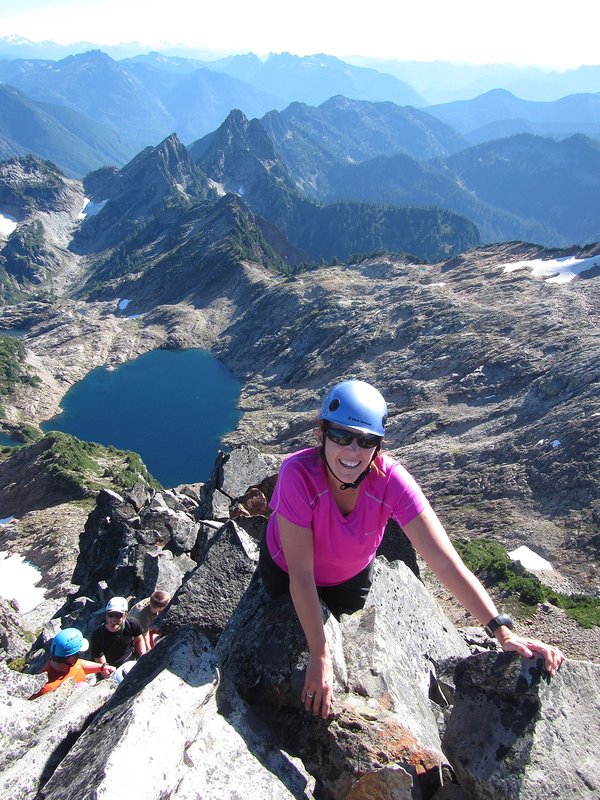Activity Notes
May 9th Update: All climbers requested to send a quick email to leader today (Monday):
- Travel plans: Driving or carpooling (with whom), ETA arrival at Marblemount
- Acknowledgement that you received group text sent out over the weekend
- Include in the email if there are any gear challenges difficulties (especially snowshoes). See the activity for gear list Mt. St. Helens, Swift Creek-Worm Flows | Mazamas
- Joe will have an InReach with tracking, feel free to share the link with friends/family: share.garmin.com/joeprest
Duncan’s weather synopsis: The weather is looking more favorable. I talked with the MSH ranger this morning who confirmed that the snow level did fall to 3000 ft over the weekend and the roads from I-5 are clear but the FR road into Marblemount snow park has some snow and there is a clear, single-track. Marblemount Snowpark is at 2600 foot elevation. The freezing level will go above Marblemount elevation Tuesday noon and expect the roads to be clear. The ranger recommended to carry a set of traction devices (fyi, rangers always recommend carry chains). I plan to drive in Tuesday in the daylight. It will be cool for those camping Tuesday evening (temps hovering above freezing). Looks like there may be some convection fog Wednesday morning at Marblemount. Wednesday 5:30am temps will be at the freezing level and temps will drop steadily as altitude increases all the way to the summit where the low will be 19 degree F. There could be sun on the summit (fingers crossed). Winds will be light and from the West. The next weather front comes in late Wednesday night so the hope is that over the next 24 hours the front does not come in any earlier. SNOTEL data is interesting. 2+ feet of snow fell over the weekend but only seven inches of additional snow registered at the 4400 ft Swift Creek station. That is an indication that the snow is consolidating well. Stay tuned for 24 hour update.
May 8th Update: The May 11th weather forecast is starting to come together with more favorable climbing conditions. The major storm system should play out on Sunday after dumping several feet over the weekend. Expect that the climb temperatures at the trailhead will be 32 deg F and lower to 25 deg F mid-climb and 21 deg F on the summit. Temps will warm on the descent and the high will be 39 deg F back at the trailhead. The winds will be 5-10 mph. There will be cloud cover at the start but after a few hours the meteograms predict that we will be above the clouds. Bring your 15-degree sleeping bag for car camping. Roads should be ok for travel Wednesday morning but with temps hovering around 32-degree, plan accordingly. Joe Preston is the assistant for the climb and we will discuss a turn around time for the climb over the next few days.
Gear discussion:
- Snowshoes: More than one Climb Leader has reached out and they strongly advised to carry snowshoes after the deep snowfall so we will plan to bring. They are now added to the gear list
- Gloves: Bring extra pairs and assume that you will have to switch gloves after glissading
- Hiking Poles: Switch to snow baskets for those of you who removed the baskets for trail hiking this Spring
- Water: Reread the comments below about how to manage your personal water intake systems when climbing in below freezing temps. Ask questions if unsure about your system. My third liter of water will actually be a liter of Gatorade.
- Sit pad: Nice to have when we take short breaks and good insulator when sitting on the snow. I also use for extra padding when glissading.
Communication Plan: Everyone should have received the group text on Saturday. Let the leader know via email hartd87@gmail.com if you did not receive the group text from 503-758-1462. When you receive this Activity notice on Sunday, text "Bigfoot" to the group text to acknowledge that you can use the group text and acknowledging the 72-hour weather update. Did I tell everyone that I like questions?
Duncan’s May 8th Risk Management scoring: Wind: +1. Precip: +1. Visibility: +2. Summit Temp: +2. Risk Score = 6. With Moderate Team experience: Climb and continually evaluate.
May 5th Update: A lot has changed in the long-range NOAA forecast for next week. Last time we looked at the long range weather, we were expecting 1-2 feet of snow over the weekend with three good days of high pressure that would allow for good snow consolidation/travel and improved avy conditions. The high pressure system has collapsed and the conditions are starting to worsen next week. Expect the 72-48 hour update to be Monday.
Here is the detailed May 5th NOAA discussion: “A cool and wet active pattern will be with us through the weekend and into next week. Abundant moisture will be drawn into the area today and Friday, with some isolated areas of heavy rain…..with snow levels dropping<br>
Friday night for potential impactful snowfall over the higher Cascades….snow levels down to near 2000 feet by Sunday.” “Estimated rainfall amounts through tonight … in the Cascades will likely be closer to 1.25 to 2.25 inches. Snow levels are currently in the 5000-6000 ft range.” (Duncan note: an inch of rain translates to 12 inches of snow." “Snow levels….. lower 2500 feet by 12Z Sunday” “LONG TERM...The expansive upper trough persists into early next week. The operational GFS and ECMWF show multiple 500 mb low pressure<br>
centers rotating around the large upper trough. Timing any of these features this far out is futile at best, but high forecast confidence exists for continued cool and unsettled conditions.”
I like Windy. If looking at Mount St. Helens weather forecast, make sure that you follow the METEO Blue forecasting model. Windy has 5+ models and METEOBLUE is the best for mountains. Right now Windy model does not cover Wednesday, but all of the models are tracking similar.
Duncan’s May 5th Risk Management scoring: Wind: +1. Precip: +2. Visibility: +2. Summit Temp: +2. Risk Score = 7. Moderate Team experience. Proceed with Caution
May 3rd Mazamas MSH Climb Beta:
- 12 hour climb day. Climb planned to depart 7am. (Duncan note: We plan to depart trailhead 5:30am and team meeting 5:15 am. If driving, plan to arrive at trailhead NLT 4:45am.)
- Climbers decided to meet and carpool in Cougar on the morning of the climb based on reports that the road into MarbleMount required high clearance vehicles due to snow (forest service seasonal snowplowing ended in early April). The road ended up being clear. (Duncan note: will contact Forest service Monday to understand current roads conditions. There will be no road plowing. Snow level may drop to 3000 ft but roads should be ok for travel. Again, the best plan is to drive to trailhead in the light the day before and camp at the trailhead. I will be asking for detailed climber travel plans next week. Sunrise is 5:52am, civil twilight is 5:19am and sunset 8:29pm).
- Car poolers were late to trailhead and delayed 6:30am climb meeting. Left trailhead 7:20am
- There was snow starting at the trailhead leaving Marble Mount snow park (Duncan note: this is unusual as you would expect no snow for the first mile or so)
- The trailhead briefing may not have covered climber expectations for managing breaks, food/water, layering, potty break and timing of breaks (Duncan note: more information about climber expectations to follow)
- Snow shoes were brought to the trailhead but left in the cars. Crampons were carried but not used on the climb. (Duncan note: I still want everyone to understand how to source snowshoes. More to come on an ultimate decision to bring to trailhead. That snowshoe decision depends on how much snow falls, overnight below freezing temps, above freezing temps along the route, sunshine and cloud cover).
- The snow was in good condition going up and good kick-stepping. The winds were out of the North so the team was protected on the approached but were driven off the summit crater rim to 50 foot below for summit rest. (Duncan note: Winds will be coming from our backs or from the South on the way up. That is good. Winds >20mph where summit temps are below freezing is a concern. This means that we take climb slower and take fewer breaks and when we do break we break for 5 min periods to keep from getting chilled. If you use a water bladder, you will need an insulated tube and mouthpiece cover. I will carry water in Nalgene 1 liter bottles with added salts to raise freezing temp and stowed upside down on my pack).
- Glissading was unfavorable. The afternoon snow was sticky and difficult to glissade (probably due to above freezing and afternoon direct sun). (Duncan note: everyone must bring a heavy plastic bag in addition to whatever you have for glissade system. Glissading is fun but with a big group in can take a lot of time. We will give it a try, but the efficient may be to walk down some sections.
- There were a number of cornices along the route that were observed as potential avy risks. No obvious signs of trigger/release. (Duncan note: with two+ feet of snow followed by rain and wind-loading, need to carefully visually monitor the ridges along the route. NorthWest Avalanche forecasts have shut down for the season).
- On the return and with the direct sun on the lower part of the mountain, the snow turned from hard to sticky to soft. (Duncan note: possibility of carrying snowshoes up above Chocolate Falls and stash for return).
April 27th Update: We have a full team of 10 climbers accepted on the climb. Permits will be printed on May 3rd (no name changes allowed afterwards per Forest Service rules). The waitlisted climbers will be notified of their status on May 3rd. I am still strongly encouraging camping at the trailhead the night before. We will also plan to meet in Cougar for dinner at Cougar Bar and Grill, 16849 Lewis River Rd Cougar, WA after the climb to conduct a debrief.
April 12 update:
General information: The first recorded ascent of this peak was in 1853. Mt. St Helens was known to the local Native Americans as Lawelatla, or “Person from Whom Smoke Comes”. Mt St. Helens is one of the lower and technically easier glaciated peaks in the Pacific NW, but still a strenuous climb as the starting elevation is relatively low. St Helens is the lowest and youngest of Washington’s five volcanic peaks. The unique low timberline elevation results from the recent eruptions and from the porous, thick pumice soil. The peak lost 1,312 feet as a result of the famous May 18,1980 eruption. The views of Mt. Hood, Mt. Rainier and Mt. Adams from the summit can be spectacular. Be cautious of the cornices on the summit crater! This mountain is often underestimated; exposure and route-finding challenges in low visibility can make this peak as serious as any in the Northwest.
References:
Weather: https://www.mountain-forecast.com/peaks/Mount-Saint-Helens/forecasts/2549
Meeting time and driving directions: Drive up I-5 north to Woodland, Washington. Take exit 21, State Route 503, toward the town of Cougar, Washington. You’ll drive through Cougar, and then follow signs to Marble Mountain Sno-Park (for Swift Creek). The town of Cougar is about 28 miles east of I-5, and then about 3 miles further east, you’ll turn left onto Forest Road 83 toward the Ape Cave. Follow FR 83 past the junction with FR 81, which is the road to the climber's bivouac. Continue on FR 83 a few more miles to the Marble Mountain Sno-Park.
Thursday overnight camping at Marble Mountain Snow Park is highly recommended. Leader is car camping at the trailhead. I have found that I can get a better night's rest at the trailhead versus driving up early in the am. Also, sleeping at the trailhead helps with altitude adjustment. Contact the leader if you have any questions.
We will meet and begin our climb here. We’ll meet at the Marble Mountain Sno-Park at 4:45 AM. Allow 2 hours drive time from Portland; note that Hwy 503 has lots of turns and deer crossings. Also, note that the cell coverage is spotty between Woodland and the mountain, and on the mountain itself.
Permits / Fees (Trail, entrance, parking): On our May 11 climb date, a Sno-Park permit is not required (only during the Winter months). All climbers need a climbing permit to be above 4,800 feet elevation on Mount St. Helens. These have been pre-purchased, and will be distributed at the trailhead, where we will sign in (and out) at the climb register.
Climbing Skills Required: Third class snow travel, ice axe and crampon use, and glissading. Anyone going on the climb must be in good condition. Those in poor shape may be turned back at the leader’s discretion. Applicants will need to update your Mazamas profile to reflect your conditioning routine for the past two months. If you have not climbed for a while, you should get out your Freedom of the Hills 9th edition book and review: Snow Travel / Climbing chapters: 16, 17, 18, 24 and 28
Approach, climb, and descent: After a quick team meeting, we will leave the Marble Mountain Sno-Park (elevation 2,700 feet) by 5:30am. We will be in the trees for about an hour, and arrive just under Chocolate Falls, where will take a nice food, water in/out, picture break. This would be a turn-around point for anyone not fit enough for the climb. We’ll then cross the falls, spend another ½ hour or so before we leave all of the trees behind us as we start up the ridge a little more slowly, but steadily. We’ll take about a 5 minute break approximately every hour, when we reach specific flat places along the route. We’ll continue up the route to the crater rim, staying back from the corniced edge, of course! After a summit break for photos and a quick snack if it’s not too cold and/or windy, we will begin our descent, which will be by the same route, with a glissade, if conditions are favorable. You will always have the option to plunge-step down, but if conditions are favorable for a glissade, then the group will wait at predetermined spots for the plungers. The total ascent is approximately 5,600 feet, so be prepared for a stamina-fest!
Preference to BCEP Students and applicants with a history of Mazama volunteering. Leader has purchased permits for the climb. Find Activity Financial Aid Info here: https://mazamas.org/financialaid/

